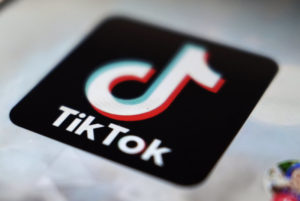For the last two decades, Millennials’ tastes have driven the direction of pop music. They rejected the gritty reality Generation X expressed in Alternative Rock and Hip Hop for songs about friends out to have fun. They replaced the guitarist with the mix DJ as the hero of popular music.
But a new generation is taking over—and we have a glimpse of how they will change the charts in a #1 hit by a 17-year-old previously known for her work on Disney’s High School Musical: The Musical: The Series.
Here are three things “Drivers License” tells us about Pop music’s future.
#1: Pop music is becoming more intimate as a new generation takes over the teenage demographic.
Born in 2003, Olivia Rodrigo is—according to generational theory gurus Straus and Howe—the last of the Millennials, while the high schoolers just a year or so younger than her who have made “Drivers License” a hit are the first kids of the Homelander Generation (a.k.a. Generation Z).
So far, their childhood has seen the great recession, political instability, and now COVID-19. Their Gen-X parents are hell-bent on protecting their kids form these dangers, remembering all too well how their 1970s latch key kid childhoods offered little protection.
At school, Homelanders follow the rules, now as a matter of life and death. In their private lives, now lived largely online, they seek an individuality to a degree their older Millennial siblings did not. They’re looking inward in a way Millennials look outward.
That quiet inward reflection drips from “Drivers License”. Musically, it’s minimalist. As an SNL skit said, “sounds like it’s just some teen girl singing in a room to a piano.” It’s a stripped down style some now call bedroom pop.
Lyrically, “Drivers License” is intimate, telling the age old story of broken love with multifaceted personal detail and emotional vulnerability.
A decade ago, this song would involve Friday night clubbing with friends to forget the breakup, but in the years to come, the Homelander generation won’t have its own Party Rock Anthem.
#2: More creators are crafting songs with Spotify and social in mind—not radio.
If you remember cart machines, you also know the joy of hitting the post. Through the 90s, you could do a legal ID, a PSA, and the weather over the intro.
Today, listeners sample songs on Spotify, often deciding within seconds if they’ll listen to the whole song—or at least the 30 seconds needed for streaming services to pay the performance royalty. A study from the Ohio State University found that the average hit song intro dropped from 20 seconds in the 1980s to just five seconds today.

The first few seconds of songs now function as advertisements for the rest of the song designed to reel in the listener, including more cold intros, mentioning the title within the first few words, and mini musical snapshots of the rest of the song.
This real estate is simply too valuable to waste on intros for screaming DJs.
True to this new form of songs selling themselves, “Drivers License” starts with the sound effect of Rodrigo’s mom’s car starting, then says the name of the song in the very first sentence.
Fade-outs have also faded away.
Starting with iPods, listeners skipped long fades. Why hang around when the best of the song’s obviously over? On Spotify, a listener who doesn’t skip might even listen to the song again—which doubles the royalty payment.
Like many songs today, the ending of “Drivers License” blends right back into the intro in a way that makes playing it over and over a seamless experience.
Finally, songs are increasingly including elements that are inherently sharable on social media. The piano beat-driving chorus, complete with two dramatic tempo changes, is there on purpose: Rodrigo told The New York Times’ “Diary Of A Song” that she intentionally designed the chorus’ dramatic changes “because I wanted people to be able to make TikToks where they could transition into it.”
Expect more songs’ structure to promote the marketing of the song itself.
#3: Radio doesn’t break hits, it validates them.
Radio’s new music discovery role has been slipping for years—and that wound is largely self-inflicted. In “Drivers License,” we have a song that didn’t merely first break on streaming, it hit #1 on the Billboard Hot 100 solely on the strength of streaming and sharing on social media.

Almost instantly, the song became a TikTok anthem, the platform on which Rodrigo announced the song’s release. Four days later, “Drivers License” set Spotify’s all-time record for most streams in a day with over 15 million streams globally.
Radio airplay, meanwhile, didn’t reach #1 until seven weeks after the song’s release.
Once the song had grown along a more conventional timeframe to become radio’s most played song, “Drivers License” was still #1 on Spotify. Radio undoubtedly exposed the song to a wider audience, many of whom would continue to stream it. More importantly, the song’s prolonged radio exposure—vetted by callout research—demonstrates that the song isn’t merely today’s TikTok. Radio cements the song’s sustained cultural relevance.
SNL would not have created an entire skit about “Drivers License” without radio embracing it.
Expect that listeners increasingly might not hear a new song on the radio first, but they will know it’s a real hit when they hear it on the radio.
Further Reading
- How do different generations impact popular music?
- Is Spotify a radio station or a record store? (And why it matters)
- Three Lessons the Millennium Has Taught Us about Popular Music
